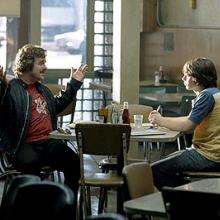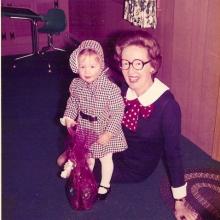strength
ENDORSEMENTS RARELY CATCH my eye, but some names that grace Zachary Wagner’s Non-Toxic Masculinity: Recovering Healthy Male Sexuality made my jaw drop. Amy Peeler and Kristin Kobes Du Mez — scholars renowned for tackling purity culture and male-centric theology — aren’t names you’d expect on a book like this. Most traditional Christian men’s thoughts on “biblical manhood” are not only flimsily dressed in culturally secular activities like playin’ sports and shootin’ guns, but also fatally based in unbiblical standards of hypersexual and violent behavior. Thankfully, Wagner swings over such pitfalls, laying out an expansive vision of masculinity rooted in the Jesus ideal: love for God and neighbor.
Wagner articulates how purity culture failed both women and men. “Many of the theological and cultural foundations of the movement were sub-Christian, even worldly,” he writes. “Dehumanizing theology leads to dehumanizing behavior” — behavior that includes fetishized virginity, body hatred, tolerated abuse, and sexual segregation. Purity culture, Wagner explains, calls men “animals” and “perverts,” confounding rhetoric I heard growing up in the church. This type of gendered, sexual denigration — especially when attributed, in part, to God’s design — only serves to further dishonor the imago dei of men and excuse sexual sin.
There’s a “pathetically low and impossibly high bar for masculine sexuality [that] trains men to resist, flee, and medicate (through marital sex) their untamable boyish immaturity rather than grow beyond it,” Wagner writes. The divinization of high libidos and heterosexual marriage can be doubly damaging for queer Christian men, who face additional stigmatization and erasure in the church.
REV. KHALIL JAAR is a warm, passionate, and energetic man—and he needs to be. As the spiritual leader and “go to” guy for the 150 Iraqi Christian refugees living in his church in Amman, Jordan, he needs all the energy he can get.
When I met with Father Jaar at St. Mary, Mother of the Church congregation in Amman, it quickly became obvious how much he loves the refugees who now call this church home. Jaar, himself a refugee, knows something about the trials and tribulations of being forced to leave your home. He is the son of Palestinian refugees of Honduran descent. (His birth name is Carlos and he took the name Khalil when he became a Catholic priest.) He also knows something about the terror of war. Shortly after the 2003 U.S. invasion of Iraq, he was abducted in Baghdad where he was serving, and “only by the grace of God was I freed,” he says.
Jaar is especially dedicated to the education of the Iraqi children forced to leave everything they knew, including their schools. In his overcrowded office, full of stacks of papers and files, Jaar pulls out a large binder. This is his personal reference book, with a page for each child in his care. It includes a photo, a short history of their family and background, their education to date, and also notes about their extracurricular activities and likes, such as soccer and music. It is important to know as much as possible about each child, he says, and make sure that they continue their education.
DURING THE WINTER of my sophomore year in high school, a fistfight broke out in the cafeteria. It wasn’t anybody I knew especially well, and it didn’t get very far, but it marked a day in my life I’ll never forget.
Once the commotion started and the chant of “fight, fight, fight” rose up in the lunchroom, everybody stood to cheer and watch. I did too, craning my neck to try to see better, probably wearing a sophomoric smirk on my face. It felt to me as if the whole world had gotten to its feet.
Everybody except one person. I only noticed when it was over and all of us turned to sit back down. My friend JJ hadn’t budged. Judging by the fact that his sandwich was almost gone, he hadn’t even let the matter affect his lunch. He didn’t ask any questions about the fight—not who was involved, not whether there was blood, not who won—he just bit into his apple.
The rest of us tittered on about the whole thing. Who we were rooting for, whether it would continue at the park after school, blah blah blah. JJ just stared off into space.
Finally, the contrast felt too much for me, and I said, “Hey JJ, why didn’t you get up?”
“I don’t like fights,” he responded. Then he looked me straight in the eye and said, “You don’t like fights either.”
I wish I could sit beside you on a cushion on the floor and have a cup of tea with you. I would like to snuggle your baby in my arms. I would like to hear your story. I know you have a sad story, and if I heard it, I would weep.
I know you are good and loving women. I’m sorry you have lost so much. I’m sorry you had to come to a country, a city, and a house that is not yours.
I can imagine you in your own country, strong women serving others. I can imagine you making beautiful food and sharing it with your family and friends. I can imagine you caring for your mothers and daughters, fathers and sons, sisters and brothers and friends. Just the way I do.
Because that’s what women do. We are compassionate. We give. We serve. We protect. We work hard to make the world better for the people we love.
Wherever I go in the world, I discover that we women are very much alike. We may have different clothes. Different languages. Different cultures. Maybe our skin is a different color. But in our hearts, we are the same.
That’s why we can look into each other’s eyes and feel connected. We can talk without using words. We can smile. We can hug. We can laugh.
And sometimes, we can feel each other’s pain. I have prayed that God would help me feel your pain. I wish I could remove your pain. I wish I could help you carry it.
A FEW YEARS ago in this column, I told the story of Charlene, a woman I had just met in a camp for displaced people in the Democratic Republic of Congo. Charlene’s civilian husband had been murdered by rebel fighters in Congo’s brutal civil war. She and her eight children then fled for their lives, ultimately finding shelter in the hovel of mud and sticks where I met them (September-October 2010).
Like thousands of other displaced Congolese women, Charlene had been forced by destitution to hike into the forest for firewood to trade for food for her children. Like thousands of other displaced Congolese women, Charlene had been brutalized by fighters who hid in the forests and used rape as a weapon of war. Like thousands of other displaced Congolese women, Charlene had been impregnated by her rapist. Because of the stigma of rape in that culture, the beautiful two-week-old baby she’d named David was destined to a life of marginalization and despair.
Charlene was the first woman I met in Congo. She explained to me that even when the women went to the forest in groups, armed rebels would overpower and rape them. If husbands went into the forest to protect their wives, the rebels would kill the husbands, and then rape the wives. The women took the risk—and paid the price.
For me, Charlene gave human shape to Congo’s horrific story of colonial exploitation, tribal conflict, and foreign greed. In the four years after we met, hers was the first story I told whenever I spoke about Congo. It was her pain that motivated me to keep speaking, writing, and advocating for Congo.
AS LARRY WATSON arrived by charter bus at the Corrections Corporation of America in Nashville, Tenn., apprehension pulsed through his body. An ex-offender, Watson had been at prison facilities before, but never for this reason—and never willingly.
Watson had been incarcerated three different times—in 1978, 1983, and 1990—for distribution of drugs. The last time, he was sentenced to up-to-30 years in jail. He was released on Jan. 14, 1993, after serving 36 months.
Now he found himself on a very different path. Watson and 17 others, mostly ex-offenders, had trekked nearly 700 miles in May 2010 on a pilgrimage from Washington, D.C., to Nashville. As they pulled into the grandiose Corrections Corporation of America (CCA) headquarters, home to the largest private prison company in the United States, a swarm of security officials greeted them. Watson and his fellow sojourners became increasingly mindful of the spirit in which they journeyed.
Their plan was creatively simple: Purchase a share of stock in the Corrections Corporation of America, the behemoth corporation that owned the private prisons where some of the group had been incarcerated. Attend a CCA shareholders’ meeting. Then, as stockholders, tell their personal stories as a way of witnessing to the “spiritual crisis” occurring within the prison industry, while also building relationships with key CCA personnel.
In essence, using their experience from the inside, members of the group planned to tell CCA how to do its job better.
“My mother... she is beautiful, softened at the edges and tempered with a spine of steel. I want to grow old and be like her.” ~ Jodi Picoult
When asked to describe my mother, Helen, my usual answer is: Queen Esther in espadrilles and a matching purse.
Esther comes to mind when I think of Mom because she was fiercely loyal, smart, determined, brave and deeply faithful. The sartorial descriptors capture my mother’s somewhat less spiritual side – always put together with a classic sense of style (although these days she leans more toward head-to-toe matching ensembles from Chicos and alligator flats, now that her penchant for wearing pointy-toed heels in the ‘60s and ‘70s have caught up with her poor feet.)
Mom has impeccable style and staggering grace, particularly in the midst of trials and tribulations. She is flinty (think Katharine Hepburn) and has an abiding, deep-in-her-DNA faith [think St. Therese of Liseux.]
Helen is a force with which to be reckoned and woe to you who would make the mistake of messing with anyone she loves.





